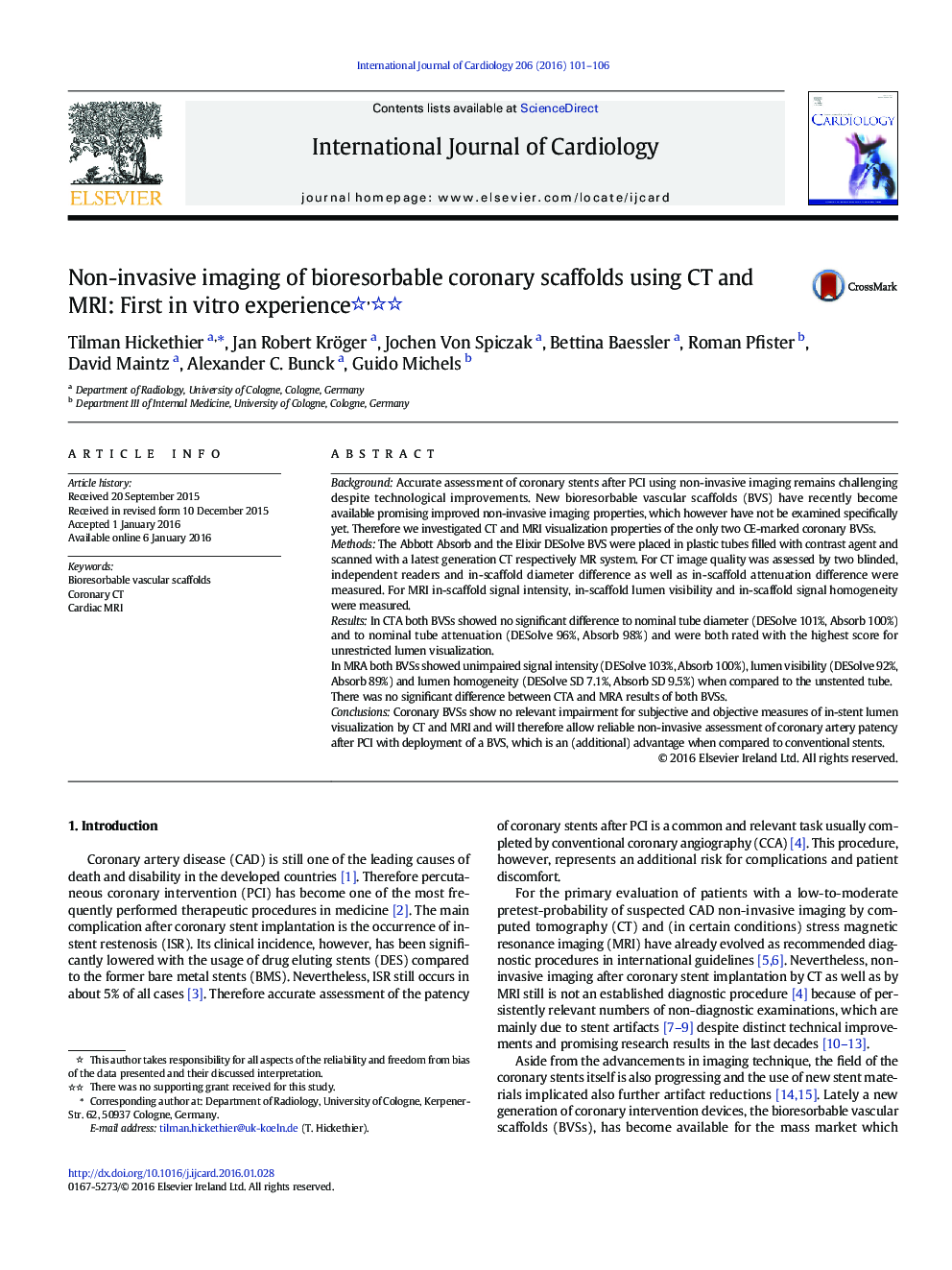| Article ID | Journal | Published Year | Pages | File Type |
|---|---|---|---|---|
| 2928749 | International Journal of Cardiology | 2016 | 6 Pages |
BackgroundAccurate assessment of coronary stents after PCI using non-invasive imaging remains challenging despite technological improvements. New bioresorbable vascular scaffolds (BVS) have recently become available promising improved non-invasive imaging properties, which however have not be examined specifically yet. Therefore we investigated CT and MRI visualization properties of the only two CE-marked coronary BVSs.MethodsThe Abbott Absorb and the Elixir DESolve BVS were placed in plastic tubes filled with contrast agent and scanned with a latest generation CT respectively MR system. For CT image quality was assessed by two blinded, independent readers and in-scaffold diameter difference as well as in-scaffold attenuation difference were measured. For MRI in-scaffold signal intensity, in-scaffold lumen visibility and in-scaffold signal homogeneity were measured.ResultsIn CTA both BVSs showed no significant difference to nominal tube diameter (DESolve 101%, Absorb 100%) and to nominal tube attenuation (DESolve 96%, Absorb 98%) and were both rated with the highest score for unrestricted lumen visualization.In MRA both BVSs showed unimpaired signal intensity (DESolve 103%, Absorb 100%), lumen visibility (DESolve 92%, Absorb 89%) and lumen homogeneity (DESolve SD 7.1%, Absorb SD 9.5%) when compared to the unstented tube.There was no significant difference between CTA and MRA results of both BVSs.ConclusionsCoronary BVSs show no relevant impairment for subjective and objective measures of in-stent lumen visualization by CT and MRI and will therefore allow reliable non-invasive assessment of coronary artery patency after PCI with deployment of a BVS, which is an (additional) advantage when compared to conventional stents.
